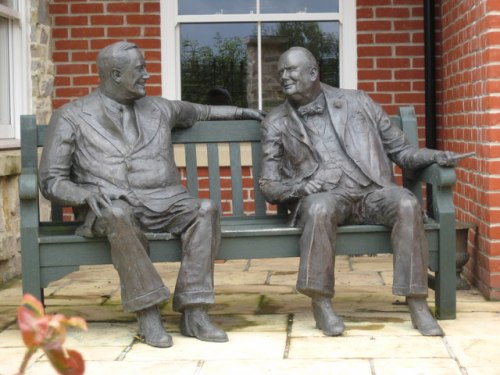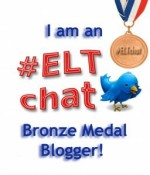
A couple of weeks ago I received a comment on the blog from a teacher who asked me to write a post about speaking skills. This is what she said:
‘The other day I was asked to observe some students doing a short peer teaching session. They were supposed to “teach a speaking skill”. Each group decided to do a group discussion activity. When I asked them what speaking skill they had tried to focus on, they were really puzzled; in fact, they had no idea what I was getting at. They said their aim was ‘fluency’. But to me it’s a very generic skill. How do you teach ‘fluency’? What is ‘fluency”, anyway? I assume it’s a culmination of numerous sub-skills. So, what could these micro-skills be?’’
I realised that she was absolutely right. In the same way that we often try to develop listening skills by practising listening, developing speaking skills is often just seen as giving students an opportunity to speak.
Practice is important of course, but, as the teacher asked, what are the microskills involved in speaking?
First of all, we need to identify what exactly we mean by speaking. Brown and Yule (1983) distinguish between primarily interactional (conversation) and primarily transactional (transmitting information) functions of speaking. Jack Richards has added a third broad function- talk as performance- which would include such things as presentations and speeches.
Each of these three types of speaking could be more or less formal, depending on the context of the talk, who is taking part in the talk and the power relations between them.
So, when teaching speaking, one of the key things that we need to do is to identify what kind of speech we are hoping students will produce, how formal it is likely to be and what kind of exponents* it might be useful to teach them.
Coursebooks often have ‘Useful Language/Phrases’ boxes with sets of functional exponents for students to use in a speaking task. Teaching these sets of phrases is helpful in developing fluency because as we start to use these chunks of language automatically we are able to use them as what Scott Thornbury describes as ‘islands of reliability’. We can skip from one automatized phrase to the next, filling in the gaps with our own ideas and language.
[See my post on Activating the useful language box in your coursebook for some ideas on how to get students to internalise and use these kinds of phrases.]
Depending on the needs of your students there are literally dozens of different functions that you could focus on. More interactional functions might include expressing likes and dislikes, comparing, agreeing and disagreeing, giving your opinion, expressing surprise. More transactional functions might include asking for directions, ordering food in a restaurant or checking into a hotel. Performance related functions could include summarising what you are going to say, or what you have said, moving onto the next section of your talk, giving an example to support your argument etc.
I would argue that teaching these chunks is very much part of teaching the speaking skill. However, we should also be looking at teaching communication skills, which may or may not involve using relatively fixed chunks of language.
For example, to have a conversation with one or more other people students will need to be able to:
- Decide whether they need to use more casual or more formal language.
- Be able to join in the conversation, which may include interrupting without seeming rude. We can teach interrupting phrases, but we also need to teach them how to use them appropriately and with the right intonation.
- Be able to back-channel- nodding, making supportive noises and also using short words such as Really? or question tags, e.g. Did you?
- Check that they have been understood, using such phrases as ‘Do you see what I mean?’ ‘Do you follow me?’
- Rephrase if they haven’t been understood.
- Check they understand. E.g. ‘I’m not quite sure if I understood that correctly. Did you mean…?’
- Change the topic politely and at the right moment.
- Take a balanced role in the conversation- not hogging, and not saying too little.
- Use politeness strategies appropriately, such as hedging (see post here), being indirect, apologising and so on.
Students will not necessarily be able to transfer these strategies from their first language, partly because the rules of engagement may be different, and partly because they are too occupied with speaking accurately, or with making a good point. Therefore we need to focus explicitly on them, and they are, in my opinion, also a key part of teaching the speaking skill.
To summarise, I don’t think we can ever say that we are ‘teaching fluency’. Instead we need to drill down a bit more and ask ourselves the following questions:
- What kind of speaking are we teaching?
- What are the learners trying to achieve? (build a relationship, get a nice meal?)
- What are some useful phrases for this kind of speaking?
- What degree of formality is likely to be appropriate?
- What impact will intonation have and what kind of intonation might be appropriate?
- How will the students be interacting with each other and what might they need to know, do or say to make the communication work smoothly?
*An exponent is a piece of language used to perform a language function. For example:
Salt!
Give me the salt
Pass me the salt, please.
Could you pass me the salt, please?
I wonder if you could possibly pass the salt?
All these exponents have the same function- getting someone to pass the salt- but they obviously vary in terms of formality and when you could use them without causing offence. Intonation would also play an important role.











![Photo Credit: [phil h] via Compfight cc](https://eltresourceful.files.wordpress.com/2014/10/29343146_3f129460a8_o.jpg?w=500&h=403)












